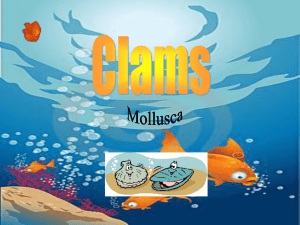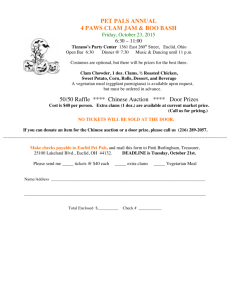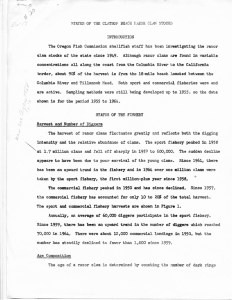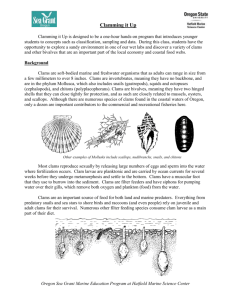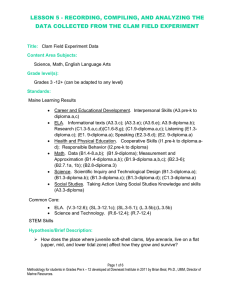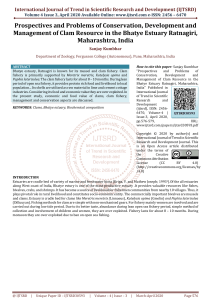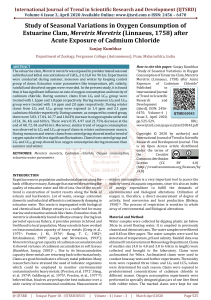CLAMS MARINE BIO PROJECT BY LUCAS WILLENBROCK
advertisement
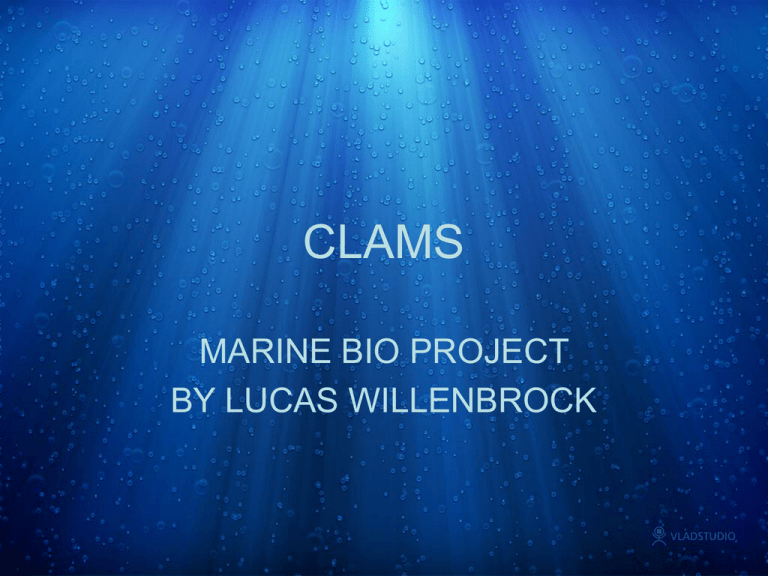
CLAMS MARINE BIO PROJECT BY LUCAS WILLENBROCK CLAM BASICS • Hard clams belong to the Phylum Mollusca which includes squid octopus and other bivalves such as oysters and Mussels • They belong to the class Bivalvia • The class has about 30,000 known species Biology • Clams have an open circulatory system • They have two usually equal halves of a shell made out of either calcite or araragonite • They have a heart, mouth, • anus and kidneys • They have no brain but due have a simple nervous system located in the foot Habitat • Clams live on the seafloor • The spend their lives in the sand or mud or attached to an object like a rock or wood pylon • They are capable or short distance movement but this typically quickly exhausts the animal. DIET • Just about all clams are filter feeders Predation • Clams have many natural enemies • They are especially venerable to specialized predators like starfish and the oystercatcher as they are able to break open the shell and it’s powerful abductor muscles. • Humans pose a huge threat to clam populations as worldwide demand increases • They are also venerable to the red and brown tides Reproduction and life cycle • They due have separate sexes but are capable of hermaphroditic reproduction • Clams if left untouched can live as longer or longer than humans • Some species can live longer than 200 years • One specimen caught of the coast of iceland was a reported 400 years old

